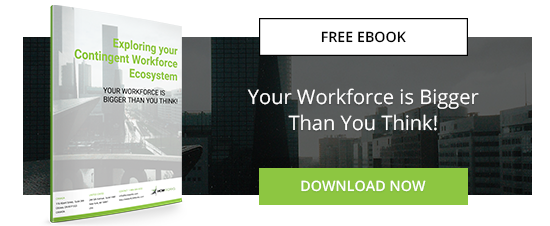The ongoing war for talent
With the economy starting to turn around, as evidenced by the latest employment figures and recent rate increase by the Fed, there are five interconnected workforce trends we can expect to see emerge or gain momentum in 2016.
EXECUTIVE SUMMARYDEMOGRAPHIC SHIFTS THE TAX MAN, ORGANIZATIONS AND WORKERS AT RISK IMPACT OF TECHNOLOGY |
Read The Full Story
The overarching meta-trend is the war for talent. There is currently fierce competition among companies to attract the best talent as they adapt to increased demand, shifting skill sets and a shrinking domestic resource pool.
Workforce Trend #1. Baby Boomers massively exit the workforce.
2016 marks the beginning of a seven-year demographic bulge during which millions of Baby Boomers will reach retirement age.
Despite the improving economy, Boomers will continue to be encouraged to retire at age 65. As they do, new and wider employment gaps will be created that highly specialized, technology-focused younger generations are ill prepared to fill. As a result, companies will be forced to re-engage retired Boomers as independent contractors.
Corporations that hire retired Boomers as consultants must ensure that they are properly classified as independent contractors. Failure to do so can have serious financial consequences.
Workforce Trend #2. The rise of the freelance economy.
In addition to the growing short-term employment needs of companies, a significant proportion of the workforce will continue to prefer contingent employment.
This is especially true of younger, knowledge-based workers who are in high demand because of their specialized skill sets. Why would a contingent worker prefer a contract to a permanent job? Because the tax rate for full-time employees is nearly triple that of independent contractors.
The growth of the freelance economy is also related to the work-life balance valued by the younger generations who will dominate the workforce in the future.
Workforce Trend #3. Increased litigation.
As the contingent workforce grows, so will litigation focused on misclassification of employees as independent contractors.
With 35 percent of the workforce currently comprised of contingent labor, the IRS has become aware of the impact the freelance economy is having on its tax base. What will this litigation look like? The lawsuits against FedEx and Uber are good examples.
In 2015, FedEx settled a claim for 228 million dollars after a court ruled that it had misclassified its drivers as independent contractors. More recently, Uber drivers have also filed a misclassification lawsuit. In addition to potentially requiring Uber to pay a large settlement, this precedent-setting legal battle threatens the core of on-demand business models.
Given this trend, organizations that retain independent contractors would be well advised to create an arms-length relationship between themselves and their ICs to avoid risk of misclassification litigation. Such a relationship can be created through independent contractor payment service providers who ensure some level of guarantee against misclassification lawsuits.
Workforce Trend #4. The driving force of technology.
The impact of technology on the workforce will continue to grow in a critical area: procurement.
Procurement technologies are becoming essential for companies to stay competitive and access talent in an efficient way. Staffing supply technology and the associated analytics offered by managed service providers (MSP) and vendor management services (VMS) are increasingly sophisticated and provide ever more information.
An MSP or VMS solution enables a company to broadcast jobs to a wider audience, amass more qualified candidates in a shorter time, and design processes to acquire staff at a lower rate.
In the past, MSP and VMS technologies were exclusive to large enterprises. In 2016, these powerful tools are available to smaller to mid-sized organizations.
Workforce Trend #5. The war on talent goes global.
At one time, outsourcing globally was a way to reduce costs. In 2016, the corporate benefits are more profound.
Finding skilled labor here at home can be cost-prohibitive, but it has also become more difficult to find the right people with the appropriate skill set in a timely fashion. A lack of skilled workers is already impacting many businesses’ ability to meet their requirements and the growth that shareholders demand. These businesses have no choice but to recruit offshore to fill skill gaps in the marketplace.
Thanks to technology, employers can now recruit globally through companies that manage a database of freelance candidates all over the world.



